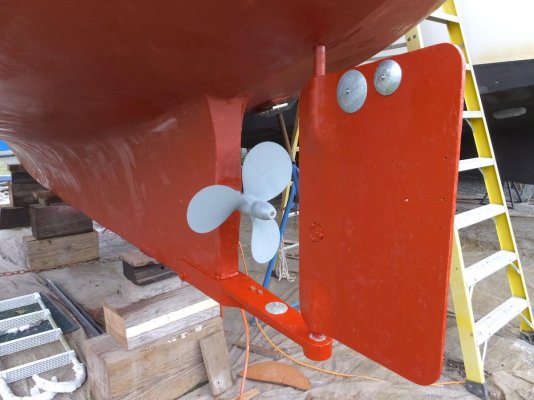Wasn't really looking for guidance of when to take my boat out, I was rather looking for people's suggestings for easier control if/when caught in that circumstance. I'm still waiting for the weather crystal ball I ordered, as the conditions on Tampa Bay that day were not forecast. ;-)
David, before you get drastic and try to change boats, take heart, there is one trick I don't think anyone has mentioned yet, and I know it works because I had a similar vessel for 16 years, and she loved following seas. I have seen us surfing at over 11 knots down waves over 7 ft high, and with finger light hold on the wheel and no violent use thereof needed, because of no tendency to broach. Yet a similar vessel in terms of length, hull shape, rudder, etc, I believe.
What was the secret..? Well, the short answer is try to move as much weight as possible aft. It helps a lot..! However, having just now re-read you OP and realised you have a Mainship, this advice still may work, as even though mine was a CHB, it was like the Mainships, a sedan, which might make weight transfer easier anyway with the bigger lazaret..?
The reason as to how this was discovered is a longer story, but might be of some interest to others. You could say a serendipitous outcome from something that to most would not be good. Because of the notoriously common issue with these types of vessel back in the days when they screwed down teak decking, drips rusted through the tops of the fuel tanks. Most owners then end up with expensive fuel tank replacement. The previous owner of mine solved it in a simpler way. His funds were limited, so, as the fuel tanks were way bigger than necessary, and too high in the hull really anyway, he emptied them, blanked them off, and converted the stainless steel water tanks in the lazaret to fuel tanks. Later I dispensed with his bladder water tank solution and added in two T-linked 200L food grade plastic water tanks - also in the lazaret. Getting the picture..? Moving a fair chunk of weight aft meant her balance in a following sea was such as to convert a broacher to a surfer in terms of weight distribution. CCT's post #47 above hints at same solution, discovered by having full stern water tanks.
I'm not suggesting you do the same thing, but some lateral thinking might allow for a decent weight distribution to help achieve the same thing. What the weight is made up of is irrelevant. Maybe move the battery bank, and add in some more. Maybe just add in some extra water capacity in the way I did..? Maybe both..? Whatever weight you can move from for'd to aft will help. Just a thought.



